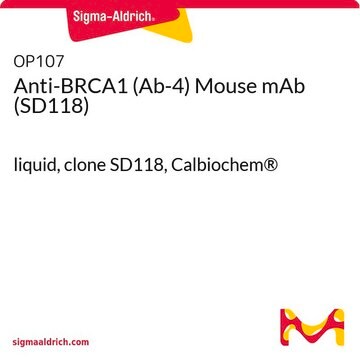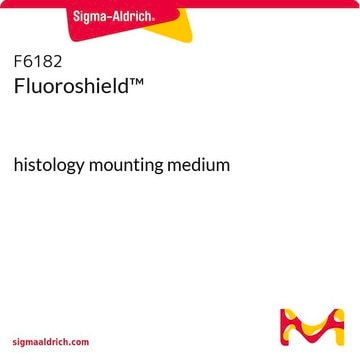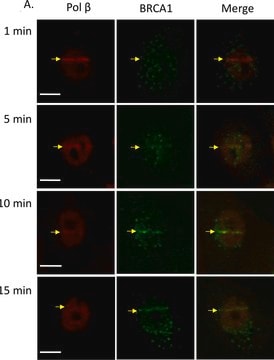10236276001
Roche
4′,6-Diamidino-2-phénylindole dihydrochloride
4′,6-Diamidine-2′-phenylindole dihydrochloride
Synonyme(s) :
2-(4-Amidinophényl)-6-indolecarbamidine dihydrochloride, DAPI dihydrochloride
About This Item
Produits recommandés
Niveau de qualité
Pureté
>90%
Forme
powder
Conditionnement
pkg of 10 mg
Fabricant/nom de marque
Roche
λmax
340 nm in aq. suspension
Fluorescence
λex 340 nm; λem 488 nm (nur DAPI)
λex 364 nm; λem 454 nm (DAPI-DNA-Komplex)
Température de stockage
room temp
Chaîne SMILES
Cl.Cl.NC(=N)c1ccc(cc1)-c2cc3ccc(cc3[nH]2)C(N)=N
InChI
1S/C16H15N5.2ClH/c17-15(18)10-3-1-9(2-4-10)13-7-11-5-6-12(16(19)20)8-14(11)21-13;;/h1-8,21H,(H3,17,18)(H3,19,20);2*1H
Clé InChI
FPNZBYLXNYPRLR-UHFFFAOYSA-N
Vous recherchez des produits similaires ? Visite Guide de comparaison des produits
Catégories apparentées
Application
Actions biochimiques/physiologiques
Qualité
Principe
Notes préparatoires
Preparation of stock solution
Dissolve in double-dist. water to a final concentration of 1 to 5 mg/ml.
Note: Do not use any buffers.
Preparation of working solution
Dilute the stock solution with methanol to a final concentration of 1 μg/ml. The working solution is stable at 2 to 8 °C for about 6 months.
Storage conditions (working solution): Stock solution (1 to 5 mg/ml) at -15 to -25 °C for 12 months.
Working solution (1μg/ml) at 2 to 8 °C for about 6 months.
Reconstitution
Note: Prepare aliquots and store at -15 to -25 °C.
Code de la classe de stockage
11 - Combustible Solids
Classe de danger pour l'eau (WGK)
WGK 2
Point d'éclair (°F)
Not applicable
Point d'éclair (°C)
Not applicable
Certificats d'analyse (COA)
Recherchez un Certificats d'analyse (COA) en saisissant le numéro de lot du produit. Les numéros de lot figurent sur l'étiquette du produit après les mots "Lot" ou "Batch".
Déjà en possession de ce produit ?
Retrouvez la documentation relative aux produits que vous avez récemment achetés dans la Bibliothèque de documents.
Les clients ont également consulté
Notre équipe de scientifiques dispose d'une expérience dans tous les secteurs de la recherche, notamment en sciences de la vie, science des matériaux, synthèse chimique, chromatographie, analyse et dans de nombreux autres domaines..
Contacter notre Service technique









